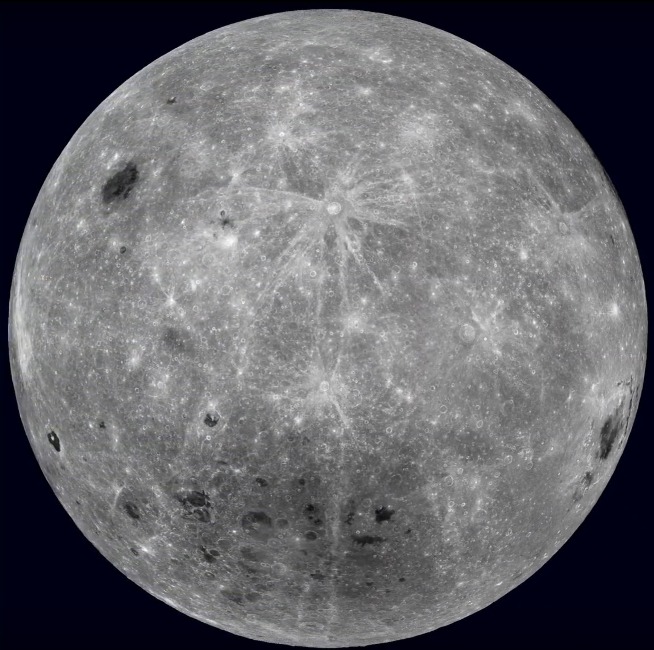It’s a Marvelous Year For a Moondance

Header Image: The far side of Earth’s Moon as seen based on data from cameras aboard NASA’s robotic Lunar Reconnaissance Orbiter spacecraft. Credit: NASA/Goddard Space Flight Center/Arizona State University
Heads up! We’re blasting off into a very SPACE (and Moon) themed weekend.
Today, we kick off World Space Week, which runs from October 4-10. This year’s theme is “The Moon: Gateway to the Stars.” World Space Week is an international effort to celebrate the contributions of space science and technology to the betterment of the human condition. It began as a UN General Assembly resolution on December 6, 1999, and organizations all over the globe participate with events that are open to the public.
Then tomorrow, October 5, it’s International Observe the Moon Night! In an effort to bring everyone on Earth together, International Observe the Moon Night offers a shared opportunity to #LookUp at the Moon in order to observe and learn together. It’s a worldwide celebration of “lunar science and exploration, celestial observation, and our cultural and personal connections to the Moon.”
In short, the Moon is our closest celestial neighbor. And that’s kind of a big deal! It was once just an object of curiosity in the sky, inspiring music, poetry, and other works of art. Then humanity looked through a telescope and saw its surface features, and eventually, we recognized it as a place. A place we could possibly one day visit. And in 1969 we did just that.
5 Fun Facts About the Moon
It’s fun to wax poetically about the Moon (ha!). And just for fun, here are five fun facts about our celestial neighbor:
- 1. Despite popular belief, there is no far side of the Moon. It’s a myth! Both sides of the Moon see the same amount of sunlight, but due to the Moon being tidally locked to Earth, only one side of the Moon is ever seen from our home planet. The side we consider the “far side” can only be seen from a spaceship!
- 2. The Moon is moving away from Earth at about the same rate as your fingernails are growing. Every year, the Moon moves roughly 3.78 cm further away from Earth. In just 3,000 years, the Moon will take one extra second to orbit the Earth than it does today.
- 3. Footprints on the Moon will last thousands of years. Why? Because the Moon has no atmosphere! This means there is no erosion by wind or water. That doesn’t mean they won’t get knocked out by small asteroids or comets, however.
- 4. During a lunar eclipse, the surface temperature of the Moon can drop 400℉. This is also due to the lack of atmosphere and the fact that the Earth blocks out light and warmth from the Sun as it passes between the Sun and the Moon during the eclipse.
- 5. Chicago’s CTA ‘L’ trains travel 238,900 miles—the average distance to the Moon—in just over one day.
We Love the Moon At the Adler!
We’ve been celebrating the Moon all year here at the Adler—and we’re not done yet! We kicked off the year with a brand new sky show, Imagine the Moon. This exciting show explores how the Moon has inspired human creativity, learning, and exploration ever since we have looked to the sky.
This summer, we celebrated the 50th anniversary of the Apollo 11 mission, which resulted in humankind’s first steps on the Moon. It’s estimated that it took 400,000+ individuals to make this feat happen; some names you might recognize—like Neil Armstrong—and some you might not—like Reatha Clark King and Robert Davidson. (Find out who these incredible individuals are in our “Voices of Apollo” Google Arts and Culture online exhibition!)
And in April 2020, we’re looking forward to celebrating the 50th anniversary of Apollo 13. With multiple life-threatening challenges facing the crew of Apollo 13, the astronauts and the team on the ground worked together to solve an almost insurmountable challenge—and the crew made it home safely. We look forward to celebrating this story of human ingenuity and perseverance with our community next year—stay tuned for details!
So what are you waiting for?! Check out one of the International Observe the Moon nights on NASA’s official website and #LookUp at the Moon for yourself!






